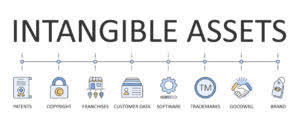
Unlike other methods of capital budgeting, the payback period ignores the time value of money (TVM). This is the idea that money is worth more today than the same amount in the future because of the earning potential of the present money. Although calculating the payback period is useful in financial and capital budgeting, this metric has applications in other industries.

AccountingTools
- There are additional tools in the app to set personal financial goals and add all your banking and investment accounts so you can see all of your information in one place.
- The time value of money is an important consideration for a business.
- The main reason for this is it doesn’t take into consideration the time value of money.
- Inflows are any items that go into the investment, such as deposits, dividends, or earnings.
- A project costs $2Mn and yields a profit of $30,000 after depreciation of 10% (straight line) but before tax of 30%.
Considering Tesla’s warranty is only limited to 10 years, the payback period higher than 10 years is not idea. For ease of auditing, financial modeling best practices suggests calculations that are transparent. For example, when all calculations are piled into a formula, it can be hard to see which numbers go where—and what numbers are user inputs Partnership Accounting or hard-coded. In closing, as shown in the completed output sheet, the break-even point occurs between Year 4 and Year 5. So, we take four years and then add ~0.26 ($1mm ÷ $3.7mm), which we can convert into months as roughly 3 months, or a quarter of a year (25% of 12 months).

Step 4: Calculate Payback Period
It’s also useful for small businesses or start-ups with limited cash, or in uncertain, high-risk situations. Using the averaging method, the initial amount of the investment is divided by annualized cash flows an investment is projected to generate. This works well if cash flows are predictable or expected to be consistent over time, but otherwise this method may not be very accurate. Prior to calculating the payback period of a particular investment, one might consider what their maximum payback period would be to move forward with the investment. This will help give them some parameters to work with when making investment decisions. If the calculated payback period is less than the desired period, this may be a safer investment.

Free Financial Modeling Lessons
- So if you pay an investor tomorrow, it must include an opportunity cost.
- At that point, each year will need to be considered separately and then added up.
- A shorter payback period is generally preferred over a longer payback period, as it indicates a quicker return on investment (ROI) and a higher net present value.
- The project is expected to generate $25 million per year in net cash flows for 7 years.
- Any particular project or investment can have a short or long payback period.
- Previously we mentioned that companies look for the shortest payback periods.
There is $400,000 of investment yet to be paid back at the end of Year 4, and there is $900,000 of cash flow projected for Year 5. The analyst assumes the same monthly amount of cash flow in Year 5, which means that he can estimate final payback as being just short of 4.5 years. The equation doesn’t factor in what’s happening in the rest of the company. Let’s say the new machine, by itself, is working wonderfully and operating at peak capacity.
Our website is dedicated to providing clear, concise, and easy-to-follow tutorials that help users unlock the full potential of Microsoft Excel. I’m Bill Whitman, the founder of LearnExcel.io, where I combine my passion for education with my deep expertise in technology. With a background in technology writing, I excel at breaking down complex topics into understandable and engaging content.
The quicker a company can recoup its initial investment, the less exposure the company has to a potential loss on the endeavor. Every investor, be it individual or corporate will want to assess how long it will take for them to get back the initial capital. This is because it is always worthwhile to invest in an opportunity in which there is enough net revenue to cover the initial cost. Payback period can be defined as balance sheet period of time required to recover its initial cost and expenses and cost of investment done for project to reach at time where there is no loss no profit i.e. breakeven point.
Benefits of Using the Payback Period
- If earnings might decrease after a certain number of years, the investment may not be a good idea even if it breaks even quickly.
- The payback method should not be used as the sole criterion for approval of a capital investment.
- People and corporations mainly invest their money to get paid back, which is why the payback period is so important.
- For instance, Jim’s buffer could break in 20 weeks and need repairs requiring even further investment costs.
• Downsides of using the payback period include that it does take into account the time value of money or other ways an investment might bring value. • The payback period is the estimated amount of time it will take to recoup an investment or to break even. Assume Company A invests $1 million in a project that is expected to save the company $250,000 each year.
Example 1: Even Cash Flows
This means that it will actually take Jimmy longer than 6 years to get back his original investment. A large purchase like a machine would be a capital expense, the cost of which is allocated for in a company’s accounting over many years. payback equation No such adjustment for this is made in the payback period calculation, instead it assumes this is a one-time cost.
